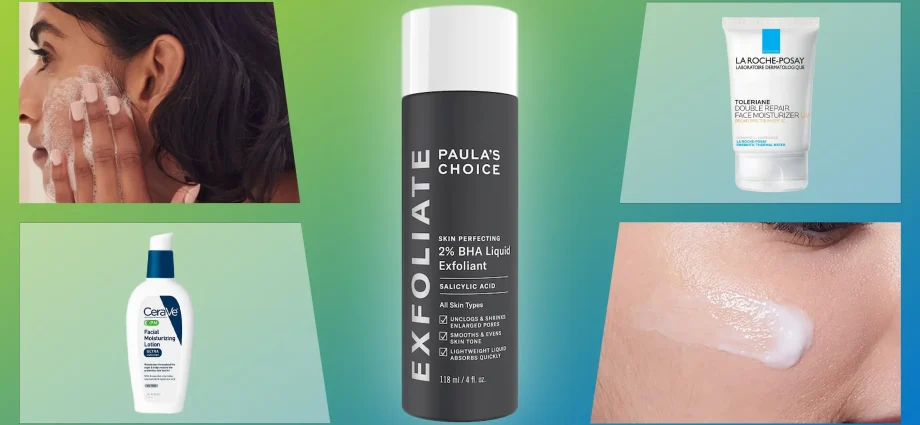Contents
Owners of problematic and oily skin are well aware that products with salicylic acid effectively fight pimples and blackheads. You will learn about the mechanisms of action of this substance from our article.
The benefits of salicylic acid
We owe the discovery of salicylic acid to three scientists from different countries at once.
The German chemist Johan Andreas Buchner isolated the bitter glycoside salicyl from willow bark in 1828.
A year later, the French pharmacologist Henri Leroux purified salicyl from impurities.
And a year later, the Italian chemist Rafael Piria divided it into two fractions, one of which was salicylic acid.
Salicylic acid is insoluble in water, and when it comes into contact with the skin, it destroys proteins, denaturing them.
Salicylic acid fights skin imperfections and prevents their appearance
When applied to the skin, salicylic acid:
destroys protein bridges between the cells of the stratum corneum;
promotes exfoliation of the upper layer of cells;
reduces oiliness, which accelerates the process of smoothing and renewing the skin;
having an anti-inflammatory effect, reduces rashes and prevents the appearance of new ones.
Cosmetics based on salicylic acid enhances the antimicrobial protection of the skin and suppresses inflammation.
Salicylic acid is most often included in the composition of products for oily and problem skin.
Types of cosmetics with salicylic acid
Usually salicylic acid is used to improve the condition of oily and problematic skin, which is characterized by:
expanded pores;
black dots;
susceptibility to inflammation.
To solve the above problems, there are different categories of tools.
Cleansing foams and gels cleanse the skin of impurities and remove makeup.
Lotions and tonics complete the cleansing and normalize the pH level.
Peels and scrubs exfoliate dead skin cells.
SOS agents of local action are applied pointwise and help to quickly get rid of inflammatory elements.
Creams moisturize, mattify and have antibacterial properties.
Check if you are taking care of problem skin properly.
Overview of salicylic acid products
Blemish & Age Cleansing Gel, SkinCeuticals
Lather a little gel in the palms of your hands and spread it over the skin with massage movements, avoiding the area around the eyes. Wash off with warm water.
Clear Skin Cleansing Gel, Garnier
In addition to salicylic acid, zinc, which regulates sebum production, fights blackheads and other imperfections.
Corrective emulsion against oily sheen and blackheads Effaclar K +, La Roche-Posay
Light textured product regulates sebum secretion and mattifies the skin. Provides a feeling of cleanliness and freshness for the whole day.
Fluid with herbs for problem skin Blue Herbal Moisturizer, Kiehl’s
Well exfoliates the top layer of dead cells and opens clogged pores, reduces the number of imperfections and serves as a prevention of their reappearance.
Cooling face mask Confort Frosted, Lancôme
Salicylic acid, together with rose water and meadowsweet extract, reduces pores, makes the skin even and radiant.
How to choose cosmetics with salicylic acid
On the packaging, this substance is referred to as Salicylic Acid. When choosing the right product, consider the condition of your skin. If you are concerned about peeling and redness of the skin, a feeling of tightness and discomfort after cleansing with water, consult a dermatologist for advice.
Otherwise, there are no restrictions on the use of products with salicylic acid.
Application rules
Oily and problematic skin care includes four stages.
Cleansing twice a day with a gel or foam. Exfoliate once or twice a week with a scrub, peel, or exfoliating mask.
Toning after every wash.
The use of a corrective agent with an exfoliating, sebum-regulating effect.
Moisturizing.










